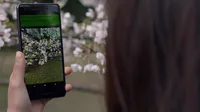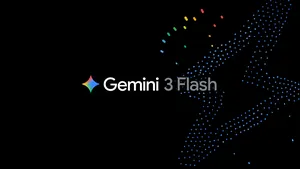How TensorFlow is powering technology around the world

Editor’s Note: AI is behind many of Google’s products and is a big priority for us as a company (as you may have heard at Google I/O yesterday). So we’re sharing highlights on how AI already affects your life in ways you might not know, and how people from all over the world have used AI to build their own technology.
Machine learning is at the core of many of Google’s own products, but TensorFlow—our open source machine learning framework—has also been an essential component of the work of scientists, researchers and even high school students around the world. At Google I/O, we’re hearing from some of these people, who are solving big (we mean, big) problems—the origin of the universe, that sort of stuff. Here are some of the interesting ways they’re using TensorFlow to aid their work.
Ari Silburt, a Ph.D. student at Penn State University, wants to uncover the origins of our solar system. In order to do this, he has to map craters in the solar system, which helps him figure out where matter has existed in various places (and at various times) in the solar system. You with us? Historically, this process has been done by hand and is both time consuming and subjective, but Ari and his team turned to TensorFlow to automate it. They’ve trained the machine learning model using existing photos of the moon, and have identified more than 6,000 new craters.
On the left is a picture of the moon, hard to tell where the heck those craters are. On the right we have an accurate depiction of crater distribution thanks to TensorFlow.

Switching from outer space to the rainforests of Brazil: Topher White (founder of Rainforest Connection) invented “The Guardian” device to prevent illegal deforestation in the Amazon. The devices—which are upcycled cell phones running on Tensorflow—are installed in trees throughout the forest, recognize the sound of chainsaws and logging trucks, and alert the rangers who police the area. Without these devices, the land must be policed by people, which is nearly impossible given the massive area it covers.
Topher installs guardian devices in the tall trees of the Amazon

Diabetic retinopathy (DR) is the fastest growing cause of blindness, with nearly 415 million diabetic patients at risk worldwide. If caught early, the disease can be treated; if not, it can lead to irreversible blindness. In 2016, we announced that machine learning was being used to aid diagnostic efforts in the area of DR, by analyzing a patient’s fundus image (photo of the back of the eye) with higher accuracy. Now we’re taking those fundus images to the next level with TensorFlow. Dr. Jorge Cuadros, an optometrist in Oakland, CA, is able to determine a patient’s risk of cardiovascular disease by analyzing their fundus image with a deep learning model.
Fundus image of an eye with sight-threatening retinal disease. With machine learning this image will tell doctors much more than eye health.

Good news for green thumbs of the world, Shaza Mehdi and Nile Ravenell are high school students who developed PlantMD, an app that lets you figure out if your plant is diseased. The machine learning model runs on TensorFlow, and Shaza and Nile used data from plantvillage.com and a few university databases to train the model to recognize diseased plants. Shaza also built another app that uses a similar approach to diagnose skin disease.
To learn more about how AI can bring benefits to everyone, check out ai.google.






